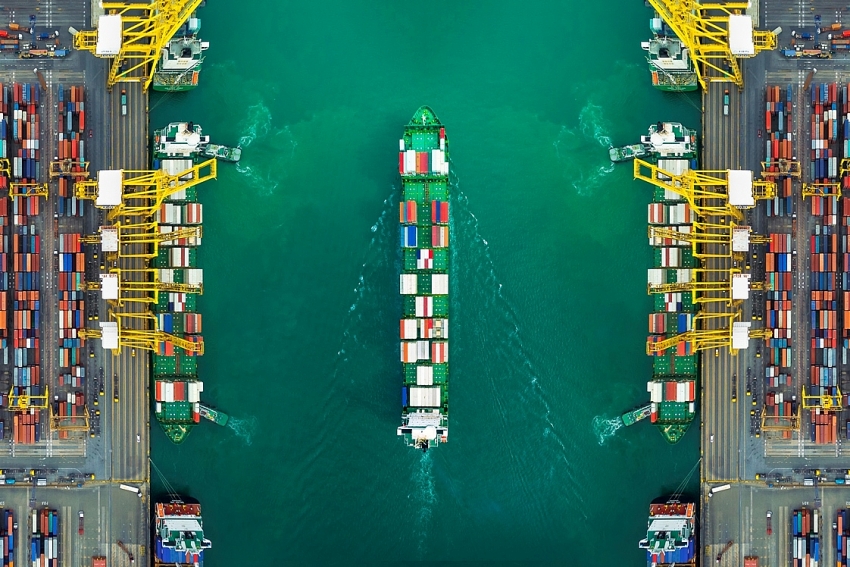CPTPP goes live in Vietnam
 |
| CPTPP aims to liberalise trade and investment in 11 member countries |
The deal is a sweeping accord that liberalises trade and investment in 11 economies in the Pacific Basin including Canada, Australia, Brunei, Chile, Japan, Malaysia, Mexico, New Zealand, Peru, Singapore, and Vietnam.
“While awaiting the outcome of the current trade truce, the CPTPP’s entry into force proves that the Vietnamese government determines to opt for the open, liberal and rules-based trading system,” said Pham Hong Hai, CEO of HSBC Bank (Vietnam) Limited.
According to Hai, the CPTPP is indeed comprehensive and progressive in how it facilitates trade and investment in the 21st century, as it tackles issues such as ecommerce and data protection.
Businesses are certain to benefit from greater clarity at a time of trade-policy turbulence – as well as from improved access to 500 million consumers.
| Vietnam can expect to benefit immediately in trade, especially export activities, including elimination of textiles and footwear tariffs by the majority of CPTPP members upon entry into force. |
The CPTPP will remove 95 per cent of the current tariffs on trade among the partners. Vietnam can expect to benefit immediately in trade, especially export activities, including elimination of textiles and footwear tariffs by the majority of CPTPP members upon entry into force.
Although the increase will not be considerable for countries with which Vietnam has already signed bilateral or multilateral trade agreements but for Canada, the impacts will be positive. Canada is the second largest market among CPTPP members with which Vietnam has yet had a bilateral trade agreement.
The country commits to cut 94.9 per cent of import tariff lines, or 77.9 per cent of its import turnover from Vietnam. For Mexico and Peru, the impact is positive because the import and export products of these two markets are complementary rather than conflicting with Vietnam.
Collectively, CPTPP members have a population of 500 million and account for 15 per cent of world trade and 13 per cent of global GDP. Ratification by the remaining members (Brunei, Chile, Malaysia and Peru) is expected to follow.
There is also an opportunity for other markets to join – China, South Korea and the United Kingdom have all expressed interest.
Not only will the CPTPP boost the trade of its members – it has been estimated that by 2030 exports in CPTPP countries will increase by more than 6 per cent, especially 8 per cent for Vietnam – but it may also lead to a shift in global supply chains as trade is rerouted to CPTPP countries, thanks to increased competitiveness from improved market access.
The implementation of the CPTPP will bring even more benefits over the next decade as duties on most remaining tariff lines are phased out. According to HSBC’s recent survey, nearly four in 10 (39 per cent) companies in CPTPP member countries including those in Vietnam believe that the agreement will directly or indirectly help their businesses.
“FTAs such as the CPTPP simplify import and export procedures and reduce the cost to trade. For example, the CPTPP provides for full cumulation, meaning that businesses in CPTPP markets can use inputs sourced from other CPTPP markets to qualify for preferential treatment within the region.
“With the CPTPP now in effect, there is no better time for businesses to raise their awareness and maximise the benefits that are on offer,” Hai stressed.
What the stars mean:
★ Poor ★ ★ Promising ★★★ Good ★★★★ Very good ★★★★★ Exceptional
Related Contents
Latest News
More News
- Vietnam’s green transition demands collective financial action (December 15, 2025 | 12:00)
- VIR workshop highlights capital and policy for sustainable development (December 15, 2025 | 11:00)
- National Assembly approves pilot mechanisms to accelerate major projects in Hanoi (December 12, 2025 | 11:29)
- Vietnam eases policy approval requirements, simplifies foreign and outbound investments (December 11, 2025 | 17:53)
- Unpacking new momentum in Vietnam’s M&A market (December 10, 2025 | 09:59)
- Forum honours outstanding M&A deals, strategies, and advisory firms (December 09, 2025 | 18:22)
- Vietnam enters defining phase of M&A growth (December 09, 2025 | 17:00)
- Vietnam’s M&A market opens new opportunities amid strong economic momentum (December 09, 2025 | 15:00)
- Vietnam M&A Forum 2025: new position, new momentum (December 09, 2025 | 14:30)
- FDI in Vietnam jumps on additional capital and share purchases (December 09, 2025 | 13:56)

 Tag:
Tag:



























 Mobile Version
Mobile Version